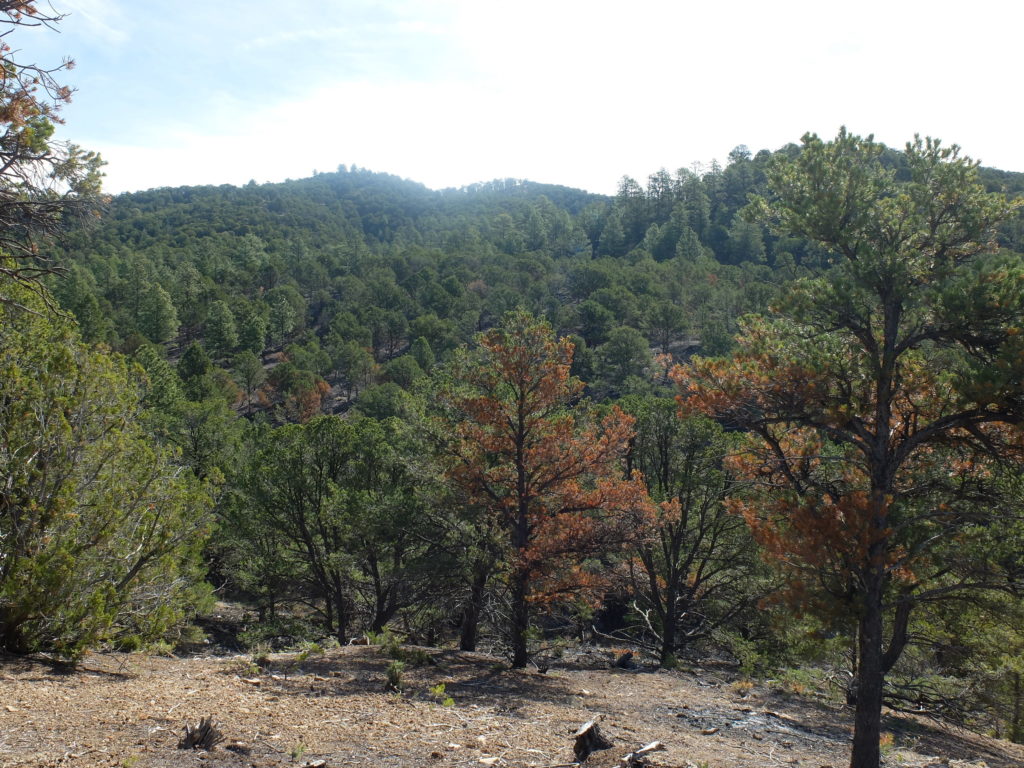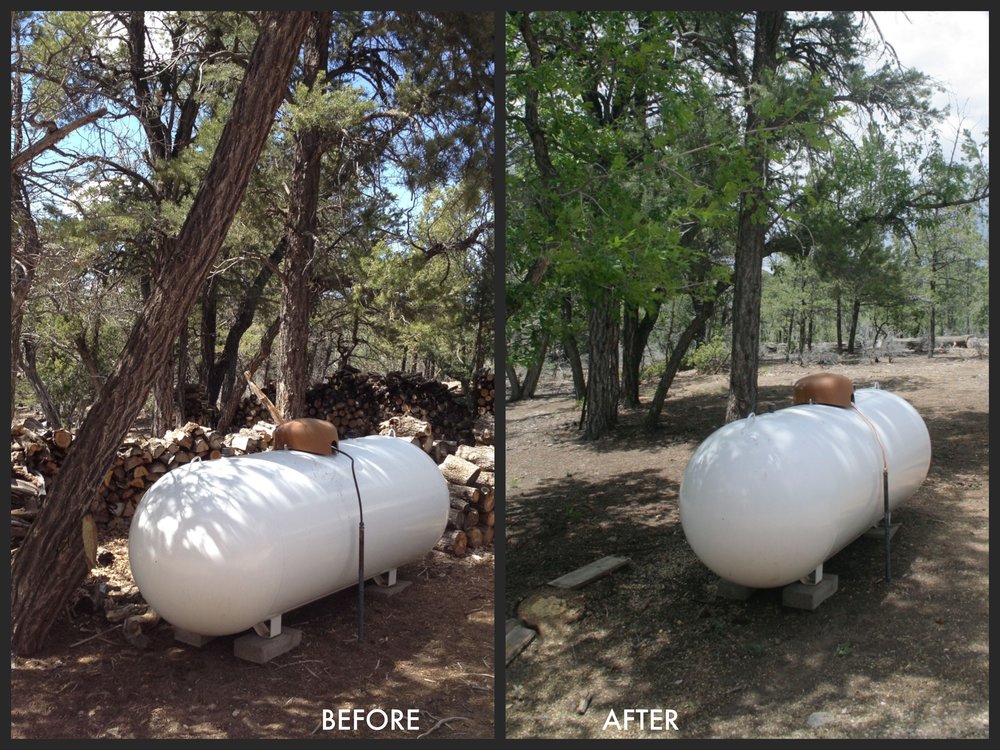
New Mexico’s campaign to address the ecological health of its forests and watersheds will be showcased at the Society of American Foresters national convention in Albuquerque, Nov. 15-19 (www.safconvention.org).
A scientific/technical session and a technical tour (Rio Grande Water Fund/Santa Fe Fireshed) will feature the Greater Santa Fe Fireshed Coalition, one of several forest health initiatives statewide.
Here’s a look at these efforts.
At 43 pages, the New Mexico Forest and Watershed Health Plan is modest in length compared to the 121,697-square-mile landscape it addresses.
Its authors describe the ecological health of the landscape as being in “an unhealthy state, as demonstrated by overly dense woody vegetation, a degradation of biodiversity, and fragmentation and deterioration of wildlife habitat. As a result, New Mexico faces greater susceptibility to catastrophic wildfire and drought, compromised watersheds and decreased water supply, accelerated erosion and desertification.”
Since its adoption in 2005, the report’s call for an integrative collaborative approach when conducting ecological restoration has served as the foundation for all current (and future) ecological restoration undertaken in New Mexico.
“We are a big state, we have a lot of land, we have a small population and a pretty small community of practitioners who do this work, so we know each other. It just became obvious that we have to be coordinated and do this type of work together in order to really be effective at a larger scale,” explained Susan Rich, the state’s forest and watershed health coordinator.
The creation of the Forest and Watershed Health Office and Rich’s position was one of the plan’s 20 action items.
“Here [forests and watersheds] are just so clearly linked,” she said of the dual mission. “Our surface water sources and our aquifer water sources are tied to precipitation in the high-elevation forestlands. People who live here recognize that connection.”
In the decade following the report’s adoption, a number of its action items have been completed, including conducting a statewide assessment of forests and watersheds and establishing an online clearinghouse for information. Others are ongoing, such as creating a statewide project database and supporting local collaborative efforts.
The statewide assessment and ensuing strategy and action plan identified the high-priority watersheds, and those areas became the focus for establishing collaboratives, said Rich.
Depending upon the area, a collaborative may be led by county or state agencies, conservation districts or grassroots groups, but in all cases “they’re developed to meet the needs of the landscape and the needs of the people who work and live in the landscape,” she said.
In the case of grassroots-initiated collaboratives, Rich and her colleagues help the groups frame their work within the statewide goal of landscape-scale ecological restoration, so they can be more successful in obtaining funding and, in the long run, be more effective.
There have been setbacks in creating collaboratives where they are needed, Rich acknowledged: “There have been a couple attempts to start collaboratives where it’s recognized as a high-priority watershed, but for some reason it’s not ripe on the ground to have one. They start and sputter — they haven’t quite taken off yet.”

An Integrated Approach in Action
One of the grassroots collaboratives that took off right away is the Greater Santa Fe Fireshed Coalition (GSFFC), and from the beginning it was established and built on the National Cohesive Wildland Fire Management Strategy framework.
Porfirio Chavarria, the wildland-urban interface specialist with the Santa Fe Fire Department, recalled that there were two separate discussions occurring within the community that helped build momentum and support for the eventual formation of the fireshed coalition.
“Eytan Krasilovsky, with the Forest Stewards Guild, and I had approached the mayor of Santa Fe to discuss working together on outreach and projects related to creating fire-adapted communities within Santa Fe,” said Chavarria. “The mayor was all onboard and said, ‘Okay, let’s do this. What are the action items?’ ”
Unbeknownst to Chavarria, his chief, Erik Litzenberg, was also in discussions of his own. “Two weeks later, my chief and state forester Tony Delfin called a meeting in December 2015 to get all the partners to say we want to do something in this landscape.”
That’s not to say that work hadn’t been done on the landscape. A number of projects were initiated in response to the Cerro Grande fire in 2000. In the nearby Santa Fe National Forest, the Pueblo of Tesuque and the Bureau of Indian Affairs Northern Pueblos Agency had conducted fuel treatments on Aspen Ranch and planning for the Vigil Grant.
Fuels-reduction treatments were also conducted within the city’s 17,000-acre municipal watershed. In Santa Fe, a citywide hazard and risk assessment in 2006 identified 19 neighborhoods that had a wildfire risk. As part of his duties, Chavarria visits landowners and connects them with resources to help reduce their wildfire risk.
Through its green waste program, the fire department picks up slash material from May through September and hauls it to the transfer station for free. Chavarria said that one community produced enough slash that residents needed weekly pickups for 10 weeks. Another community along the Santa Fe River took the initiative to do fuels-reduction work along the riparian corridor, “which is excellent, because that leads right to our municipal watershed,” Chavarria said.
However, as a result of the December 2015 discussion, it was recognized that a more integrated approach was needed to effectively carry out the restoration work; hence the need for
GSFFC. GSFFC encompasses a 107,000-acre landscape in the southern Sangre de Cristo Mountains, which was identified as a high-priority area by the state’s Forest and Watershed Management Coordinating Group. It includes the Santa Fe municipal watershed, the Pueblo of Tesuque and national forest lands, as well as state and private land. More than 20 partner organizations representing state, local, tribal and federal agencies and nongovernmental organizations participate in the coalition.
Since that discussion, three task teams — a landscape analysis team, a communications team, and the implementation team — were formed to parse out the work.
Chavarria, along with Krasilovsky, is a member of the communications team, while his supervisor, Greg Gallegos, a wildland superintendent, is on the implementation team, and Chief Litzenberg is currently serving as the coalition’s chair through the end of 2017.
In late September 2017, the overall landscape assessment The Nature Conservancy produced for the landscape analysis team was unveiled to the public, and in the next few months the strategies for addressing the work will be rolled out, along with a signatory event of all the partner organizations to make GSFFC formal.
Even as this planning work was underway, there was concurrent forward momentum with identifying and funding restoration projects. Chavarria said that a number of agencies, including the Santa Fe–Pojoaqu Soil and Water Conservation District, New Mexico State Forestry, the Pueblo of Tesuque, the Forest Stewards Guild and the U.S. Forest Service, have received grant funding or allocated funds for projects within the fireshed.
“I don’t know whether some of these projects were going to be done anyway, but what has happened is this [the Greater Santa Fe Fireshed Coalition] has given support to people to accomplish these projects with backing from other partners,” said Chavarria.
“Attracting the funding and then being able to apply it in a complementary way across jurisdictional boundaries — that’s probably the most solid accomplishment besides the development of the science-based risk assessment and the [Greater Santa Fe Fireshed Coalition] itself,” Rich said.
It’s the funding of these projects that has and will make the difference in the success of this collaborative and others, according to Rich. Since 2014, the Division of Forestry has received $12.2 million in state funding for watershed restoration on public lands, with a matching $14.5 million in federal funding.
“All the activity that’s happening in New Mexico now couldn’t have happened without the state funding that has been coming through the last five years,” she said. “The forest and watershed health plan set up the foundation and got things moving, but the fruit of all this effort really happens when you get the governor’s and legislature’s support and state funding and that leverages the federal funding and attracts foundation support and private industry.”
Andrea Watts is the associate editor of The Forestry Source. In addition, she is a contract writer for the U.S. Forest Service Pacific Northwest Research Station and has written for publications that include TimberWest, CIDERCRAFT, Seattle Business, and Planning. Andrea can be reached at [email protected].
It is important to note that the watershed treatments (technically Santa Fe’s water supply) were NOT restoration, rather they were hazardous fuels reduction, a very different set of goals and objectives.
The larger “fireshed” would likely receive restoration treatments that rely more on prescribed burning. Not everyone is in agreement on what should be done and what is an efficient and effective use of funds. most agree that private properties must be made “firewise” since no amount of forest treatments will protect structures for ignition in a wildfire.
Wildfire is inevitable and indeed desirable in the forests above Santa Fe. The bigger question is how do we learn to live with this important ecosystem process. Can we fortify our infrastructure to withstand wildfire and the resulting effects, like flooding, debris flows, etc.?
Natural wildfire creates critical wildlife habitat, captures carbon long-term in charcoal and dead trees, provides the substance for future soil and forests and creates spectacular scenery in the form of colorful aspen forests.